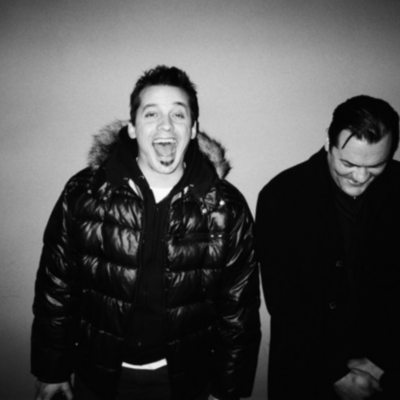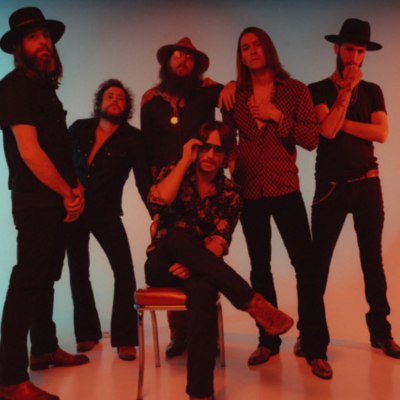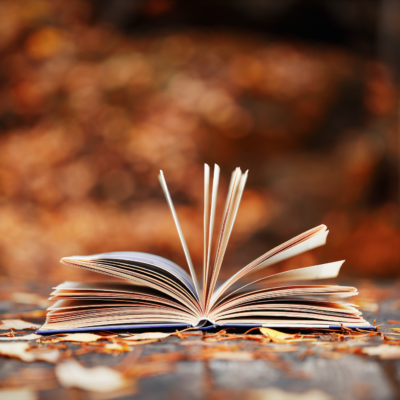Cursive,
with Jeremy Enigk,
and The Cops
Satellite Ballroom
November 16
 |
music The four fellows in Cursive don’t perform concerts so much as they perform conceits: Bandleader Tim Kasher’s lyrics for “Big Bang” and “Butcher the Song” tell narratives, sure, but they also deliver a huge damned racket. In a live setting, the racket becomes an important reference point for the lyrics—“Big Bang” is both a critique of creationism and epic noise. So, as if two opening bands aren’t enough rattle and hum, Cursive brought a three-piece horn section and a cellist on tour with them—eight clever bulls in a china shop.
Opening act The Cops seamlessly cranked out full-bodied pop-rock for 40 minutes, rarely stopping between songs, but often halting in the middle at the snap of a snare. Though songs may have exceeded six minutes in length, they were delivered in roaring, attention-deficient bursts, over tastefully employed dance-rock cymbals.
The Cops gave way to Jeremy Enigk, a singer-songwriter who proves that nothing says “free publicity” like being a recluse. The songwriter is notoriously private, yet remains an icon to many in the emo music scene for his role in Sunny Day Real Estate, a band that separated when Enigk found religion and two other members found the Foo Fighters.
A dignified Enigk delivered stripped versions of the orchestral pop of World Waits, his first new record in 10 years. New tracks featured Enigk’s inimitable vocals, pleasantly gruff in tone, over lush melodies. An epic album may be in the man yet, though it may take him another 10 years in musical exile to find it.
Cursive’s latest concept album, Happy Hollow, fails when it sacrifices choruses for extended metaphors. Cut and paste new tracks like “Dorothy at 40” into a weathered live set, however, and the result is a vicious and cohesive concert. Cursive’s touring horn section reinforced jolting bass lines and creaky minor chords in older tunes like “Gentleman Caller,” but also left the four core members to themselves on tracks like “The Martyr,” from 2000’s Domestica.
Try as they might to avoid structure, Cursive knows their strengths. The band capped the night with “Art is Hard” and “Sink to the Beat,” two of their most self-referential tunes, now popping with waves of eruptions thanks to baritone sax and cello flourishes. With luck, Cursive’s future will bring more bombast, but a little more formula—routine and repetition never sounded so ferocious live.—Brendan Fitzgerald
NBA Live 07
Electronic Arts
Xbox 360
NBA 2K7
2K Sports
Xbox 360
 |
games Sports games caught on the cusp of next-gen era are like expansion teams—they arrive with tons of fanfare, everybody rushes out to buy the jerseys and merchandise, and then they flounder for several seasons before finally finding their footing.
So it was for last year’s initial next-gen showdown between EA’s NBA Live series and 2K Sports’ NBA 2K. The latter hit the pine having forgotten, apparently, to put on basketball shorts—the Xbox 360 version of NBA 2K6 was all but indistinguishable from its Xbox counterpoint. NBA Live 06, meanwhile, managed only Charlotte Bobcats-level success.
One year later, the AND1 shoe’s on the other foot. Suddenly, EA looks like the Sacramento Kings—a team that’s stuck tinkering in neutral—and 2K’s the one poised to make a New Orleans Hornets-style leap.
2K7’s deadliest post move is its new look, which finally takes advantage of the power of next-gen graphics to make ballers like Kobe and D-Wade look and shoot like their real-life counterparts. Combining good looks with a smart AI that reacts to your offensive sets, 2K7’s like the Phoenix Suns after they landed Steve Nash.
As it has with most of its next-gen sports titles, EA has really focused on graphics and presentation with NBA Live 07—from the ways in which the sweat glistens and drips down Shaq’s hulking forehead to the A-plus, tag-team commentary of Steve Kerr and Marv Albert. Unfortunately, all that gorgeous style comes at the expense of the game play. I’m glad to see dynasty and All-Star Weekend modes make their next-gen splash, but I’m not happy to see players jerking from a standing dribble to an explosive dunk as though someone exploded a firecracker in their shorts.
Say what you want about NBA 2K7’s new 24-7 mode, a story-based affair in which you create a street baller and try to break into the league, but at least it’s moving closer to capturing the experience of trying to compete at the game’s highest level. EA’s Madden and NCAA Football series have started down this road already, and it’s time for NBA Live to follow suit.
And when is NBA Live going to adopt 2K7’s intuitive right-analog shooting mechanic? It shows up when your players step to the charity stripe—for a refreshing change, you can actually make free throws this year—but otherwise, we’re still stuck dribbling in the button-mash era.
As any Cleveland Cavs or Washington Wizards fan can tell you, a year can be the difference between also-ran and playoff force. Take heart, EA. As of now, it’s Advantage: 2K.—Aaron R. Conklin
Dirty Blonde:
The Diaries of
Courtney Love
By Courtney Love
Faber and Faber Inc., 304 pages
words First thing I should say about rock’s petulant publicity mistress, Courtney Love: I got no problem with her. Her newly published journals, Dirty Blonde, chronicle how ardently she has courted public opinion for the past 15 years. I got no problem with that, either. Never have. In some quarters, drawing attention to your product is called good business.

So to the matter at hand, Love’s diaries: They are a lot like her. Expensive yet cello-taped; glossy yet trashy. Picture a Euro fashion magazine made by seventh-graders. Then picture the scrapbook of a ballsy metal head. Or the scrapbook of a punk marketing director.
I’ll tell you one thing: The woman knows how to build a brand.
Too bad the drugs made her so goddamned stupid. Some people said it was her Dior party dresses that robbed her of her cred. Punk tramps don’t wear pastels and dewdrop earrings, they sneered. Leading her band Hole, especially once her masterpiece Live Through This was released (two days after her sniveling husband Kurt Cobain committed shotgun suicide over their garage), Love secured her crown as punk’s tottering, shrieking queen. Going Hollywood, which she did with gusto (part of her product development plan all along, as the journals demonstrate) made her soft and crazy, said these nattering nabobs of gender-based negativity.
Wrong!
It was the drugs. The suck-my-tit-watch-me-bleed, lick-anything-with-powder-on-it, screw-inferiors-like-Julian-Casablancas drugs. She’s off them now, but no doubt the ride ain’t over, sweetheart.
Dirty Blonde takes you through a lot of it, the craggy potholes and the thrilling peaks of Love’s highway to hell. Here’s an excerpt from the summer of 1991: “LOVE U IN A CHEAP TRICK WAY, but not in a Black Sabbath way.” Love’s destination has always been clear: the throbbing, bloody heart of pop culture. It informs every grain of her imagination.
Apparently a doer, she makes obsessive lists of steps to be taken on the way to the top of public awareness. Like a Tourette’s sufferer on steroids, she is fascinating and awful to watch. She scopes others and takes more than one hostage, of course (and yes, we’re talking to you Drew “kissing cousin” Barrymore), but the regular target of her rage and ambition is herself. Scribbling on a publicity still from a movie she made with Island Pictures in 1987, she declares it “testament to my charisma not my face. I’m getting my nose fixed ASAP.” Which, for the record, she did. Twice. The boobs, the lips, the eyes, and the butt it seems got fixed, too.
None of which says anything extraordinary about Love in the Age of Botox. The real reasons we look at her and look again are that she’s a damn fine songwriter and she doesn’t mind singing with glass shards down her throat. Additionally, she has made her naked embrace of fame and its shearing price a kind of real-life continuous performance art project. What could be more po mo? What could be more punk? (Joke’s on you, motherfuckers, she seems to be saying. Gabba gabba hey). Sometimes she looks good in her act; sometimes she looks like another round with the hairbrush couldn’t hurt. But always—even doped to within an inch of her sanity—she embodies the culture’s love/hate tie to fame.
Sure the heavily airbrushed band photos, the glossies of Love posing in Versace menswear for a fall campaign, the ruby-red lipstick smears make this book eye candy for the angry feminist set. But there’s something more meaningful among the pages, too.
Check out this entry from the dark, intoxicated days toward the end of 2003-4: “In a patriarchal society men identify themselves with culture and women w/nature and the body.
“I am a public figure unhappy with my share of the American dream. There can be only one reason for this. I am on drugs and have the morals and mentality of a cartoon character. What did I want after all?? If I wanted certain things, like respect and privacy, I should have put out certain universal female symbols like chastity and ethereal mutedness…”
Well, maybe she should have. Maybe
that would have been easier on her family and friends. But, speaking as one in the audience, I’m glad she didn’t. She might be a walking study in demonology, but that’s exactly what some of us dig about her.—Cathy Harding
On Agate Hill
By Lee Smith
Algonquin Books of Chapel Hill, 363 pages
words At first glance, Lee Smith’s new novel, On Agate Hill, has nothing going for it save Smith’s stellar reputation. The front cover is one step away from a Harlequin Historical Romance. All that’s missing is a Fabio-like figure whose 19th century waistcoat barely contains his splendiferous pecs.
 |
The opening pages don’t help matters. Yet another Southern writer serving up yet another Civil-War era tale? Kill me now. Yet another coming-of-age story told in the voice of a teenage girl? Resurrect me and kill me again.
But wait. Smith has some structural surprises up her sleeve that prove she’s a crafty writer who’s always worthy of our attention.
Molly Petree is an orphan raised amidst the post-Civil-War withered glory of a plantation in North Carolina called Agate Hill. We’re exposed to the details of her time there via her diary—a fictional device that’s fraught with potential problems.
To create the clear narrative that she wants, Smith must have Molly sound less like a diarist randomly spilling her guts onto the page and more like a novelist recalling events in their precise order, complete with dialogue. And when Molly does concentrate on her inner life, the banalities of a 13-year-old girl’s mind will make certain that readers long for the intellectualisms in Virginia Woolf’s diaries, or the unrelenting lightning bolts of brilliance in Emily Dickinson’s letters.
Still, like most kids her age, Molly does occasionally come out with some interesting stuff, and, more importantly, her indomitable spirit and avoidance of self-pity is infectious.
The diary ends when Molly is sent to Gatewood Academy, a boarding school for girls. Suddenly, we get a fascinating portrait of what such a place was like from the perspective of the school’s headmistress, Mrs. Mariah Snow, and of her sister, Agnes Rutherford, as well as of Molly (this time through letters written to a friend).
Snow is a sort of “madwoman in the attic” who must operate the best she can in a repressive, prefeminist era. She records her thoughts in a diary she titles “For No One’s Eyes.” The alluring contents of this diary more than compensate for Molly’s more prosaic version.
And that’s not all. Smith comes up with more devices, and one recurring one, to tell the story of Molly’s marriage to a philanderer and her implication in his murder. By this time, our Fabio-like figure is a distant memory, having sauntered off to find his appropriate home on the cover of another novel.—Doug Nordfors





